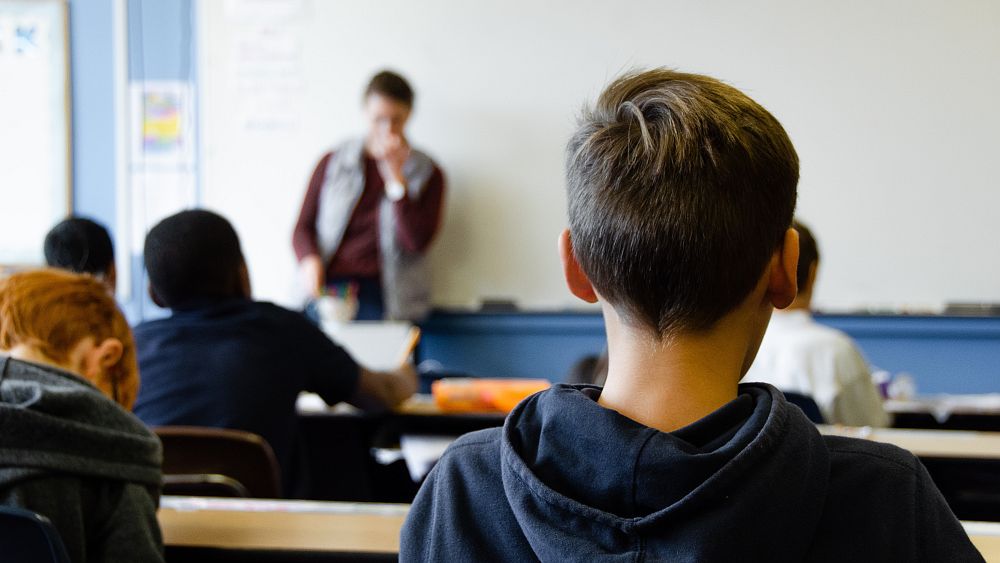Why is Spain among the EU’s worst for people not studying or working?

In Spain, 17% of the population is neither studying nor working. A figure above the OECD average of 15%. So why is this happening?
Jan’s last job, in 2022, was to buy and sell products. After that he had no luck in finding more work, so he decided to go back to school and finish his studies.
The 21-year-old Spaniard is trying to shake off the label of “nini”, as people who neither study nor work are known in the country, but the outlook is not very flattering.
He has not received a single job offer since finishing his high school studies before the summer, despite actively looking for one.
For years, Spain has suffered from a persistent scourge: it remains one of the European countries with the highest proportion of young people aged between 18 and 24 who are neither studying nor working.
At 17%, it is above the Organisation for Economic Co-operation and Development (OECD) average of 15%, according to the latest Education at a Glance 2023 report.
Among EU countries, the Czech Republic, Italy and Romania have higher percentages (31%, 24% and 22% respectively), while Greece has a similar percentage to Spain.
At the other end of the scale are Sweden, Norway and Germany, where the percentage of inactive people is below 10%.
“It is difficult to find a job in Spain because most job offers require experience, and you cannot gain experience if you are never given the opportunity. Also, salaries are quite low compared to the rising prices of everything,” Jan told Euronews.
Why does Spain top the ranking?
For Nacho Sequeira, director general of the Exit Foundation, which works to reduce the dropout rate among vulnerable young people, the problem lies in “an explosive combination”.
“Too many young people are dropping out of school. Spain has the second highest number of early school leavers in the European Union, after Romania. In addition, the country has too many unemployed young people, it is the absolute leader in youth unemployment,” Sequeira told Euronews.
While some countries have compulsory education until the age of 18, in Spain it is 16.
“The reality of employment is that a young person under 18 is not hired anywhere, so why do we let them drop out of school at 16?,” he added.
In the latest OECD report, Sequeira is particularly struck by one statistic, which he describes as a “serious problem”. For him, the Spanish case is very different from that of other countries.
Within the ‘ninis’ there are two different profiles: the inactive and the unemployed. They are all neither studying nor working, but there are some who are desperately looking for work and others who don’t want to.
“In most countries there are many more inactive people than unemployed people actively looking for a job. In Spain, however, the opposite is true. There are more young people looking for work who can’t find it,” he explains.
“There is a problem of mismatch, there are young people who want to work but don’t have the right training to take advantage of job offers,” he adds.
But the outlook may be changing. Gara Rojas, an analyst at the OECD, has spent years studying the figures for different countries.
What she has observed, and captured in reports, is that Spain’s data, in terms of the number of ‘ninis’, fell below 20% in 2017, then down to 19% in 2021 and to 17% in 2022.
The data shows that the trend has been positive over the past decade, and the 2022 figure is one of the best since 2008, according to the OECD analyst.
“It remains to be seen whether the downward trend will continue in the future,” she adds.
What is the secret of the Nordic countries?
While Spain is still trying to fall down the rankings, other EU countries have been boasting about their figures for years.
The southern European country’s problem is both an unstable labour market and an education that is sometimes abandoned too early, but the secret of other countries is precisely to pay attention to the development of pupils in the classroom.
“The Nordic countries have a long tradition of a second-chance education system. One reason for this is that the welfare state was built by social democrats and the possibility for working-class people to get an education was an important goal,” Per Kornhall, Swedish education expert, tells Euronews.
“This meant that there should be systems that make it possible to start studying later in life or to catch up where you have missed out,” he adds.
Another reason highlighted by the expert is that Sweden has legislation that makes municipalities responsible for following up on young people who have dropped out of school, and special upper secondary programmes, or vocational colleges, for students who do not have good enough grades for the more traditional university programmes.
France is another example of a country that pays special attention to education.
“They are trying to help students in areas where there are more dropouts by dividing classes into smaller groups so that they can help students more individually,” says Gara Rojas of the OECD.
“In addition, teachers who go to schools where there are more children at risk of dropping out are paid more,” she adds.
This focus on teachers is also seen in other countries with lower dropout rates, where the most experienced teachers are sent to certain schools – a lesson that Spain could perhaps be learning too.
Source: Euro News















